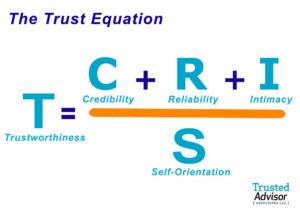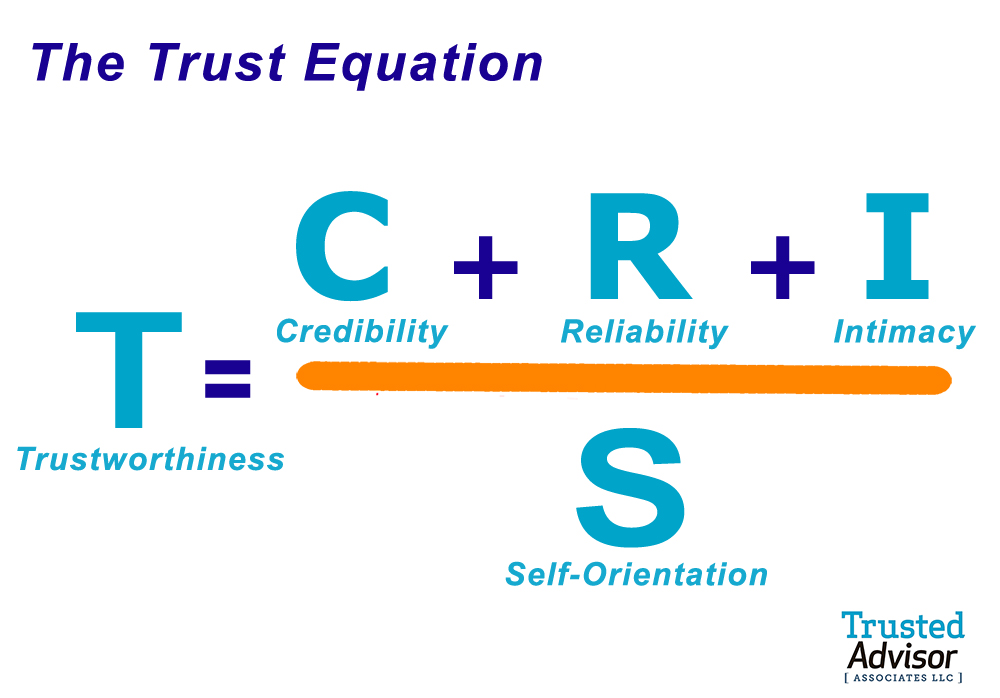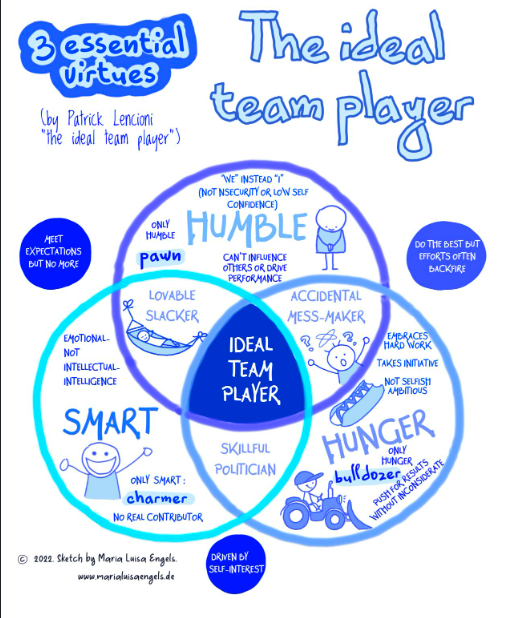Trust Equation
THE FOUR VARIABLES
The Trust Equation uses four objective variables to measure trustworthiness. These four variables are best described as: Credibility, Reliability, Intimacy and Self-Orientation.
We combine these variables into the following equation:

TQ stands for Trust Quotient. The Trust Quotient is a number — like your IQ or EQ — that benchmarks your trustworthiness against the four variables.
Let’s dig into each variable a bit more:
- CREDIBILITY has to do with the words we speak. In a sentence, we might say, “I can trust what she says about intellectual property; she’s very credible on the subject.”
- RELIABILITY has to do with actions. We might say, “If he says he’ll deliver the product tomorrow, I trust him, because he’s dependable.”
- INTIMACY refers to the safety or security that we feel when entrusting someone with something. We might say, “I can trust her with that information; she’s never violated my confidentiality before, and she would never embarrass me.”
- SELF-ORIENTATION refers to the person’s focus. In particular, whether the person’s focus is primarily on him or herself, or on the other person. We might say, “I can’t trust him on this deal — I don’t think he cares enough about me, he’s focused on what he gets out of it.” Or more commonly, “I don’t trust him — I think he’s too concerned about how he’s appearing, so he’s not really paying attention.”

